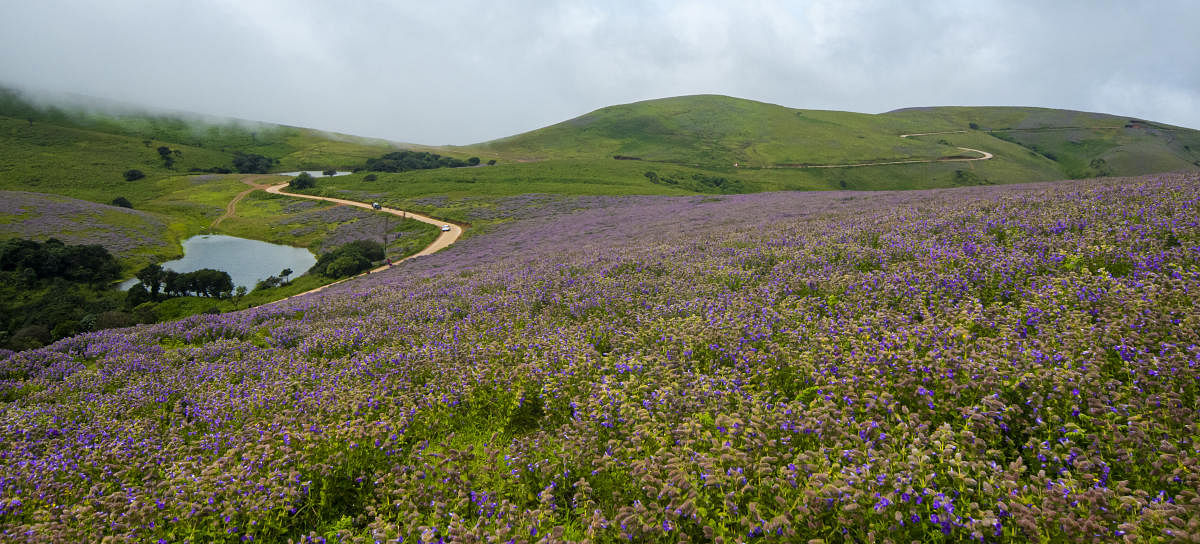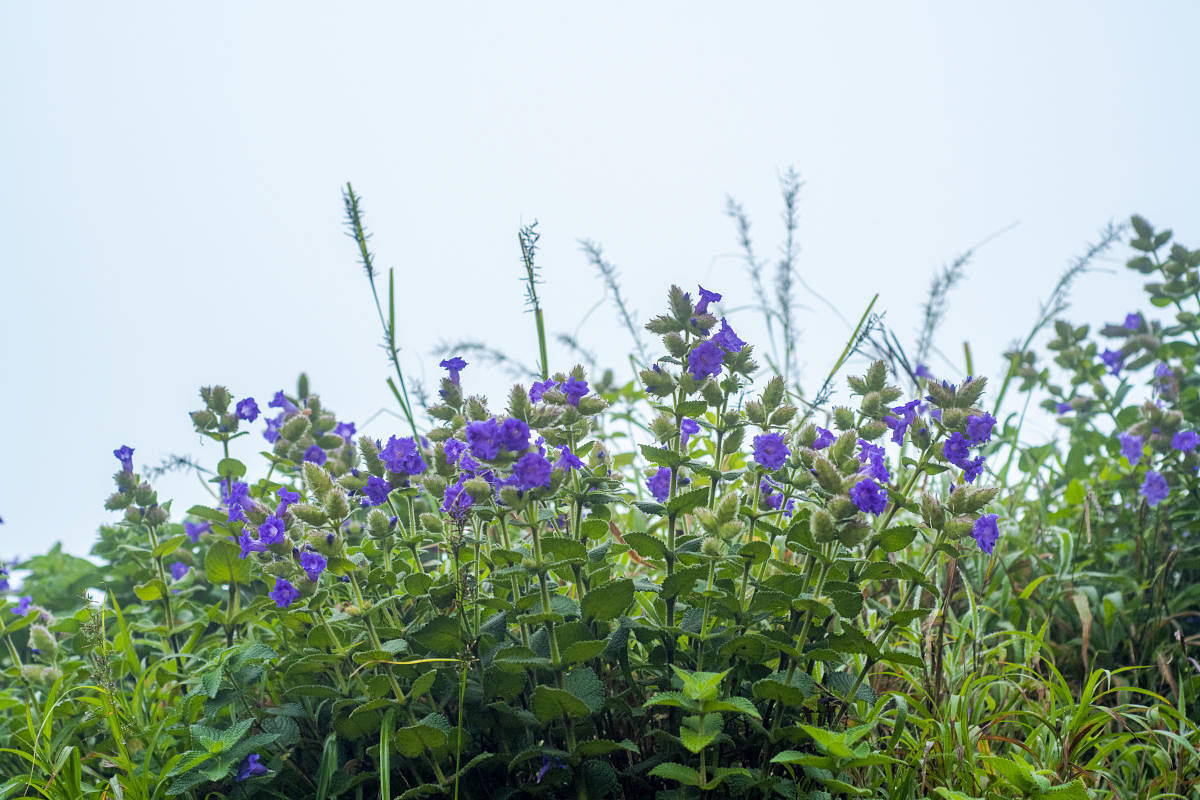

A once-in-twelve-years opportunity is driving people to flock to Seethalayanagiri, Mullayanagiri and Bababudangiri in Chikkamagaluru to see the majestic Neelakurinji (Strobilanthes kunthiana). The sight of the blue flower carpet enveloping the green hills, for as far as the eye can see, enthrals visitors.
Every twelve years, the otherwise plain-looking Shola hills spring to life when the flower finally blooms. It then keeps blooming in the hearts of the viewer who cherishes its elegance and striking beauty.
The frequent drizzles, fluttering clouds and ice-cold winds offer the flower a magical touch. Just as beautiful as the blossoms of blue, is the sight of the many buds standing ready to bloom. Bees and butterflies fly around, trying to make the most out of the seasonal nectar, considered precious by many.
It is very difficult to procure honey solely made by the nectar of this flower. Three or four years ago, we managed to procure such honey from the Devaramane forest near Mudigere. Its scent and taste still linger in my mind.
The Neelakurinji flowers bloom between July and October. Locals say it rains more the years these flowers bloom. There are more than 250 species of flowers within this variety. Of these, about 45 can be found in India, mainly in Ooty, Palani, Kodaikanal, Yercaud and Munnar.
The Paliyan tribe of Tamil Nadu refers to the flowering cycle of these shrubs to calculate their age.
The Kerala tourism website explains why it takes more than a decade for the Neelakurinji to bloom: “Neelakurinji flowers take a long time to pollinate, so it takes up to 12 years for the flower to bloom. In botany, this is known as the 'survival mechanism' of plants. The long time needed for pollination avoids complete destruction by predators and climate change. Thus, this plant has found a way to save its species by making this change in itself.”
The exhilarating sea of blue on the hills has inspired poems and artworks from many, in praise its beauty in speedy winds and amid the cover of mist. In Kannada poet L K Sumitra's words, the Neelakurinji creates, “A blue blanket for all the peaks, blue embroidery for the green drapes, a blue flash that sways in the wind, a blue turban for all the hills”.
The rare phenomena can be seen on Chikkamagaluru's Sholas for the next two weeks.
(Translated from Kannada by Shree D N)